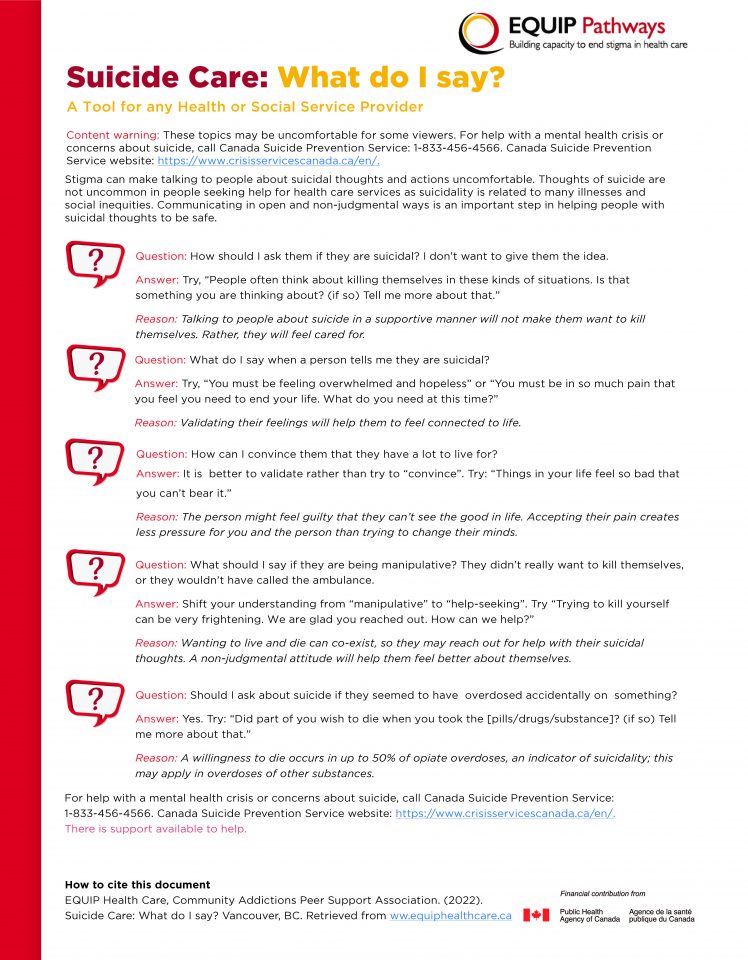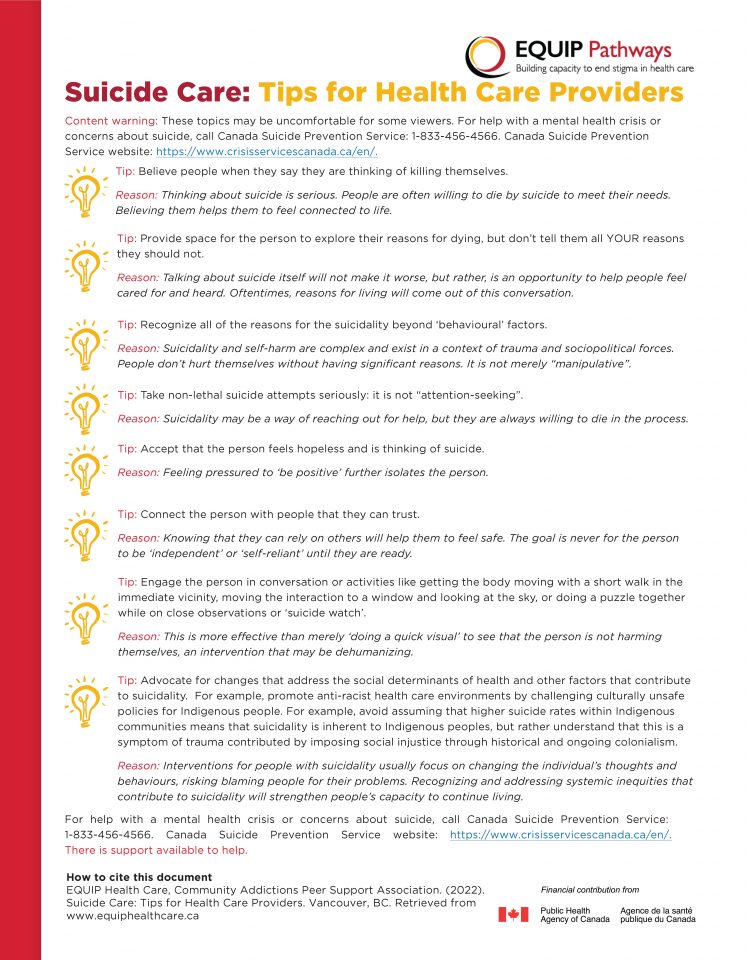Suicidality & Stigma: A Trauma- And Violence-Informed Approach To Reducing Stigma
Content Warning:

These topics may be uncomfortable for some viewers. For help with a mental health crisis or concerns about suicide, call or text 9-8-8. Support is available 24 hours a day, 7 days a week through 9-8-8: Suicide Crisis Helpline.
Thoughts of suicide are not uncommon in people seeking help for health care services. People with suicidal thoughts seek help in all health care settings, not only Emergency Departments, or psychiatric and mental health settings. Stigma can make talking to people about suicidal thoughts and actions more difficult. Using a trauma- and violence-informed, equity lens to understand suicidality can help us to better respond to people seeking help, and to create organizations and spaces where people feel more welcome and safe to share their experiences.
We designed a series of resources to help people who provide care better understand suicidality and how to support people experiencing suicidality. Resources include written learning tools on the “basics” of suicide and substance use, suicide care tips, and suggestions for “what to say”. The complementary video series can deepen understanding and provides an opportunity to hear from a service provider and people with lived experience of suicidality and substance use stigma. Because diverse forms of stigma (mental-health stigma, substance use stigma, poverty-stigma, racism) intersect with suicide stigma, similar strategies are needed for all forms. For strategies and resources to address stigma and discrimination, see the EQUIP Equity Action Kit.







